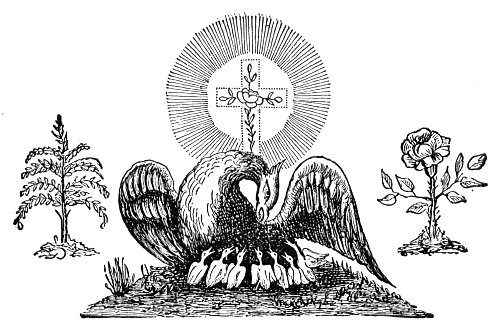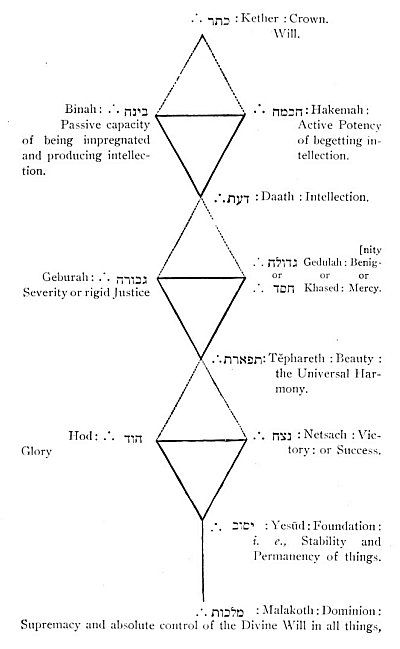p. 276
[Prince Rose Croix.]
EACH of us makes such applications to his own faith and creed, of the symbols and ceremonies of this Degree, as seems to him proper. With these special interpretations we have here nothing to do. Like the legend of the Master Khu_ru_m, in which some see figured the condemnation and sufferings of Christ; others those of the unfortunate Grand Master of the Templars; others those of the first Charles, King of England; and others still the annual descent of the Sun at the winter Solstice to the regions of darkness, the basis of many an ancient legend; so the ceremonies of this Degree receive different explanations; each interpreting them for himself, and being offended at the interpretation of no other.
In no other way could Masonry possess its character of Universality; that character which has ever been peculiar to it from its origin; and which enables two Kings, worshippers of different Deities, to sit together as Masters, while the walls of the first temple arose; and the men of Gebal, bowing down to the Phœnician Gods, to work by the side of the Hebrews to whom those Gods were abomination; and to sit with them in the same Lodge as brethren.
p. 277
You have already learned that these ceremonies have one general significance, to every one, of every faith, who believes in God, and the soul’s immortality.
The primitive men met in no Temples made with human hands. “God,” said Stephen, the first Martyr, “dwelleth not in Temples made with hands.” In the open air, under the overarching mysterious sky, in the great World-Temple, they uttered their vows and thanksgivings, and adored the God of Light; of that Light that was to them the type of Good, as darkness was the type of Evil.
All antiquity solved the enigma of the existence of Evil, by supposing the existence of a Principle of Evil, of Demons, fallen Angels, an Ahriman, a Typhon, a Siva, a Lok, or a Satan, that, first falling themselves, and plunged in misery and darkness, tempted man to his fall, and brought sin into the world. All believed in a future life, to be attained by purification and trials; in a state or successive states of reward and punishment; and in a Mediator or Redeemer, by whom the Evil Principle was to be overcome, and the Supreme Deity reconciled to His creatures. The belief was general, that He was to be born of a Virgin, and suffer a painful death. The Indians called him Chrishna; the Chinese, Kioun-tse; the Persians, Sosiosch; the Chaldeans, Dhouvanai; the Egyptians, Har-Oeri; Plato, Love; and the Scandinavians, Balder.
Chrishna, the Hindoo Redeemer, was cradled and educated among Shepherds. A Tyrant, at the time of his birth, ordered all the male children to be slain. He performed miracles, say his legends, even raising the dead. He washed the feet of the Brahmins, and was meek and lowly of spirit. He was born of a Virgin; descended to Hell, rose again, ascended to Heaven, charged his disciples to teach his doctrines, and gave them the gift of miracles.
The first Masonic Legislator whose memory is preserved to us by history, was Buddha, who, about a thousand years before the Christian era, reformed the religion of Manous. He called to the Priesthood all men, without distinction of caste, who felt themselves inspired by God to instruct men. Those who so associated themselves formed a Society of Prophets under the name of Samaneans. They recognized the existence of a single uncreated God, in whose bosom everything grows, is developed and transformed.
p. 278
[paragraph continues] The worship of this God reposed upon the obedience of all the beings He created. His feasts were those of the Solstices. The doctrines of Buddha pervaded India, China, and Japan. The Priests of Brahma, professing a dark and bloody creed, brutalized by Superstition, united together against Buddhism, and with the aid of Despotism, exterminated its followers. But their blood fertilized the new doctrine, which produced a new Society under the name of Gymnosophists; and a large number, fleeing to Ireland, planted their doctrines there, and there erected the round towers, some of which still stand, solid and unshaken as at first, visible monuments of the remotest ages.

Moe is the founder of GnosticWarrior.com. He is a father, husband, author, martial arts black belt, and an expert in Gnosticism, the occult, and esotericism.






